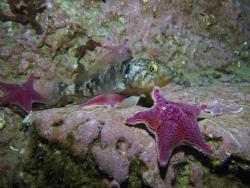High Arctic Change 2021
What Are They Doing?
The Svalbard Archipelago has an arctic climate and is home to several large bodies of ice - alpine glaciers in the mountains, and tidewater glaciers that descend into the sea. Svalbard is currently undergoing rapid climate change with the dramatic retreat of its tidewater glaciers.
 A view in front of Kronebreen Glacier. Ny Ålesund, Svalbard, Norway. Photo by Mark Goldner (PolarTREC 2011), Courtesy of ARCUS.
A view in front of Kronebreen Glacier. Ny Ålesund, Svalbard, Norway. Photo by Mark Goldner (PolarTREC 2011), Courtesy of ARCUS.
The goal of the research is to gain a deeper understanding of ice-ocean interactions and processes at the faces of tidewater glaciers. This important research will increase our knowledge of climate change and tell the visual story - in particular, this research will further our understanding of ice retreat rates and the impact on sea level rise in the future.
Tidewater glaciers are among the fastest-changing systems in the Arctic, and the dynamic Kronebreen glacier is situated a short distance from the scientific research base of Ny Ålesund at 79°N latitude. In particular, the team will investigate how climate change affects sediment transport and deposition associated with the tidewater glaciers, icebergs, meltwater streams, and marine currents.
The summer ice mélange at the ice face in these smaller systems is flushed out rapidly making it possible to work safely from small boats at a distance (between 200m to 2 km) from the calving ice face. Our proposed work follows on our earlier observations that warm North Atlantic Water is impacting the ice face more today than seen in 2005, 2009, 2011, and 2014, increasing retreat rates. Over these years, we have observed different meltwater plumes turning on and off on a daily to weekly basis. Funded by National Geographic, we have planned the science to add observations to other aspects of the glacial system being monitored by Norsk Polar scientists (Jack Kohler, Katerine Husmin, et al).
The team will be mapping bathymetry of the ice margin area to compare with earlier surveys, and recording oceanographic data (including temperature, salinity, and turbidity of the water column) to track the inflow of North Atlantic water at the ice face. They are particularly interested in monitoring the position and velocities of subglacial jets as they exit the glacier and enter the fjord. The team will also record and monitor iceberg calving at the glacier face.
Beyond the science, public outreach using science and imagery will be used to communicate to the public critical climate change issues, exposing them to the challenges and rewards of conducting high latitude research. Public outreach will showcase arctic processes and how what happens in the Arctic high latitudes impacts coastal resiliency.


 Steve Oberbauer and Jeremy May set up the Mobile Instrumented Sensor Platform (MISP) tram. Utqiaġvik, Alaska. Photo by Alejandra Martinez.
Steve Oberbauer and Jeremy May set up the Mobile Instrumented Sensor Platform (MISP) tram. Utqiaġvik, Alaska. Photo by Alejandra Martinez.

 A view of a storm in the Bering Sea on August 2nd, 2019, as seen from Nome, Alaska. Photo by Piper Bartlett-Browne.
A view of a storm in the Bering Sea on August 2nd, 2019, as seen from Nome, Alaska. Photo by Piper Bartlett-Browne.

 A sloped blue iceberg. Aboard the icebreaker Oden between the Amundsen and Ross seas. Photo by Lollie Garay.
A sloped blue iceberg. Aboard the icebreaker Oden between the Amundsen and Ross seas. Photo by Lollie Garay.

 Group photo of all neutrino hunters currently at the ceremonial South Pole. Photo by Rishabh Khandelwal.
Group photo of all neutrino hunters currently at the ceremonial South Pole. Photo by Rishabh Khandelwal.

 Adult Emerald Rockcod (Trematomus bernacchii) surrounded by seastars (Odontaster validus) at Cape Evans, McMurdo Sound, Antarctica. Photo Credit: Rob Robbins, ASC SCUBA Diver
Adult Emerald Rockcod (Trematomus bernacchii) surrounded by seastars (Odontaster validus) at Cape Evans, McMurdo Sound, Antarctica. Photo Credit: Rob Robbins, ASC SCUBA Diver

 Scientific scuba divers use bright lights and cover lots of terrain in search for pycnogonids to collect. Turtle Rock, Antarctica. Photo by Timothy R. Dwyer.
Scientific scuba divers use bright lights and cover lots of terrain in search for pycnogonids to collect. Turtle Rock, Antarctica. Photo by Timothy R. Dwyer.

 A Weddell seal and pup out on the sea ice near McMurdo Station, Antarctica. Photo by Alex Eilers.
A Weddell seal and pup out on the sea ice near McMurdo Station, Antarctica. Photo by Alex Eilers.

 Photo Courtesy of Mosaic
Photo Courtesy of Mosaic

 A CTD (conductivity, temperature, and depth) instrument comes up from the depths of the Chukchi Sea. Aboard the USCGC Healy.
A CTD (conductivity, temperature, and depth) instrument comes up from the depths of the Chukchi Sea. Aboard the USCGC Healy.
